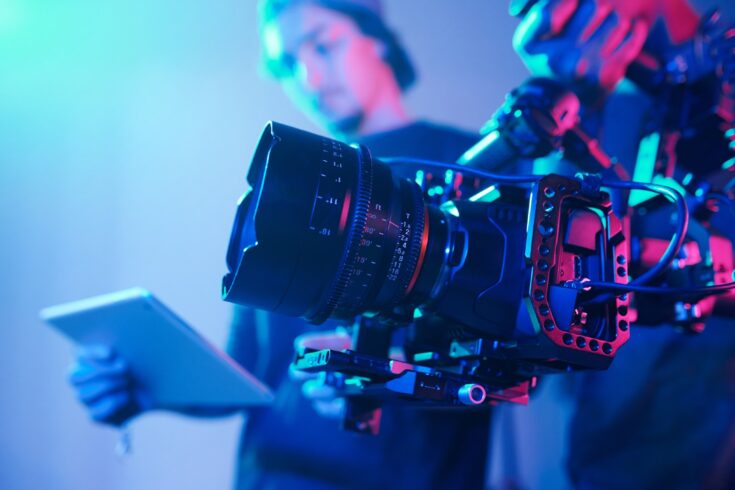In Britain, hard hitting dramas such as Ken Loach’s ‘Cathy Come Home’ or Shelagh Delaney’s ‘A Taste of Honey’ were responsible for heightening awareness of and sympathy for social issues such as homelessness or intolerance.
The 1984 film ‘Threads’ about the disintegration of society after a nuclear blast is deeply imprinted on anyone who watched it – an audience said to have included Ronald Reagan.
Jimmy McGovern’s ‘Hillsborough’ (1996) has become a kind of commemoration. The recent ‘Mr Bates vs the Post Office’ brought attention to a scandal which was well known but which suddenly blazed into the public and political conscience.
Many have seized on this last example as an illustration of the power and necessity of storytelling and narrative, a justification of the arts and humanities.
And this argument for the importance of our disciplines is an important story to tell, and a true one.
Turning watching into seeing and feeling
One of the characteristics of great art is its capacity to change and charge the focus of our attention, to turn watching into seeing and feeling.
Everyone will have their personal library of those heart-stopping, life-changing moments of recognition or realisation, a moment in a film or a picture or a song after which nothing is quite the same.
Television, still just about an experience that is shared simultaneously and widely, can magnify our personal epiphany into a collective one.
Art’s responsibility towards truth
Other stories need to be told, though, and one is about the necessary independence of art from the pretence of objectivity, and how to define art’s responsibility towards truth.
The hugely successful drama series ‘The Crown’ chose the high wire act of depicting real, living and famous individuals in dramatic form.
It was not documentary, yet at the time the concern was raised that fiction might become more believed than fact. Content warnings were discussed.
The uncomfortable elision of reality and imagination was in sharp focus but remained unresolved.
Setting story-telling free
But if there is a much debated and challenging requirement for art to be attentive to truthfulness, however one defines that notion, there is also a need to set story-telling free from a requirement to be literal.
Francis Bacon used to distinguish between representation and what he contemptuously called illustration; the role of art is a translation into a different register.
His portraits, often based in photographs, rip away realism but tell a deeper truth. And art cannot and should not conceal its artificiality. That photograph is posed. That pipe is in fact chemicals on a canvas, not actually a pipe.
The notion of impact
We might argue that the impact of the medium overrules the need for fidelity to the truth. There are two wonderful shows of activist art in London at present, ‘Re/Sisters’ on gender and ecology (Barbican) and ‘Women in Revolt!’ (Tate Britain).
Both document interventions where the politics is the performance (the Greenham Common protest, for example, appears in both). Is the art of protest required to adhere to the highest standards of veracity?
By its nature protest stands at the far end of a sometimes necessary direction of travel.
Yet the notion of impact is also something we need to address honestly.
Ken Loach noted that ‘Cathy Come Home’ did not change the conditions of homelessness; the creation of the charities Crisis and Shelter was immediate, but it was a decade before legislation was introduced.
Intolerance and fears around migration still exist. We are still (and perhaps even more dangerously) under the shadow of nuclear war. There are other scandals, other injustices, still unresolved and under reported.
To give another example, there can be little doubt that our awareness of environmental issues has been raised by their representation in documentaries, a famous example being ‘Blue Planet’s’ revelation of plastic pollution in the ocean.
The extent to which personal behaviour is changed by such brilliant film making is, however, still uncertain and controversial.
It is likely that the documentary opened the way to legislation, in this case around plastic bags.
The space for debate
Change can be slow and partial, which is why impact is hard to measure. Yet a redirection of attention opens up possibilities for action; not its inevitability, for sure, but the space for debate.
And educated debate is our best, last hope. It is only through constant dialogue that we will avoid the monopoly of attention or the triumph of cynicism, which lead to terrible decisions whose shadows last for years.
The value of arts and humanities
Seeing the value of arts and humanities in terms of the power of the story – the construction of compelling narrative – is insufficient.
What the arts and humanities can do is to educate the audience, and not just on the mechanics of fiction, but also into the complexities and tensions of human existence, to the search for truth and value, and the importance of debate.
Bringing story back into the heart of education is a core part of the Arts and Humanities Research Council’s (AHRC) work, from the important report Storycraft on narrative in business to the new project Storyarcs, led by Professor Bambo Soyinka, which works on helping more people to discover, observe and apply the underlying patterns of story.
As I have argued, an appreciation not just of how to tell a story but also of how to analyse and challenge a dominant narrative has to be a core part of how we educate each other in a media-saturated world.
As Lord Bragg recently said, this isn’t the cherry on the cake, it is the cake. And it is relevant to every citizen of every age and in every occupation.
It is vital that we sustain a vibrant arts and humanities community which is motivated to address the challenge of complexity and engender open constructive debate, in our own subjects, across science and across communities.
That is a foundational mission for arts and humanities. If we get that right, we might need fewer dramas like ‘Mr Bates vs the Post Office’.




